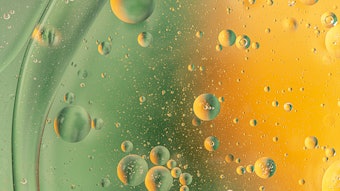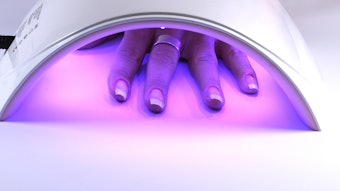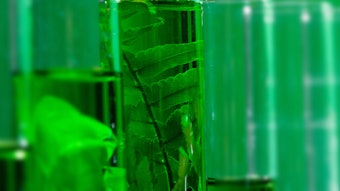This is an edited version of an article that originally ran in the June 2012 issue of Skin Inc. magazine. All rights reserved.
Recently, there have been some very exciting advances in skin care science, particularly targeting hyperpigmentation, and it is important for beauty brands to understand how hyperpigmentation occurs, what ingredients to avoid and what technology is available to successfully treat it.
How Hyperpigmentation Occurs
Also called pigment, melanin is a substance that gives skin and hair its natural color. Those with darker skin have higher amounts of melanin. By contrast, those with less pigment have fairer skin. Melanin pigments are formed as part of the process of metabolizing an amino acid called tyrosine. Tyrosine channels the production of melanin and other pigments by oxidation. In humans, melanogenesis is a darkening of the skin, or an increased production of melanin, also called hyperpigmentation. This is a common—usually harmless—condition, during which patches of skin become darker in color than the normal surrounding skin. This darkening occurs when an excess of melanin, the brown pigment that produces normal skin color, forms deposits in the skin.
Although most brightening products work through tyrosinase inhibition, it is possible to influence the process at multiple points. Hyperpigmentation occurs when UV rays from the sun attack the keratinocyte of the skin; the keratinocyte then signals the melanocyte, which initiates the production of melanin. Once the melanocyte receptors are attacked, it triggers tyrosinase, endothelium (ET-1) and alpha melanin, stimulating the alpha melanocyte-stimulating hormone (MSH) to produce melanin. Melanocytes containing melanosomes that carry the melanin pigment travel through their dendritic cells. Once they travel to the aforementioned keratinocyte, they are aggregated, deposited and produce the melanin pigment. This process is called melanogenesis, which creates hyperpigmention.
Ingredients for Hyperpigmentation
In the past, ingredients such as hydroquinone and mercury chloride have been used to treat melanogenesis. These ingredients, however, have been linked to a variety of health issues even when used in small percentages.1 Today, natural ingredients are available that can help reverse hyperpigmentation from the sun, acne scars, hormonal changes and certain prescription medications without risking future health complications. Marine biotechnology and peptide research can now help to rapidly reduce the appearance of uneven skin tone while battling hyperpigmentation to reveal a more luminous complexion. Following are some of these ingredients.
Watermelon extract. It helps protect DNA in skin cells from damage caused by UV light-induced free radicals, and decreases erythema after UV irradiation, protecting the skin. It contains naturally occurring vitamins, carbohydrates and amino acids.
Bellis daisy. Known to reduce melanin activity, bellis daisy helps provide even pigmentation and makes age spots less visible. It reduces the UV-stimulated induction of melanin biosynthesis.
Gotu kola extract. The botanical Centella asiatica is known for its anti-inflammatory properties. It may promote wound-healing by stimulating collagen and glycosaminoglycan synthesis, and it promotes healthy skin and helps reduce skin irritation.
Licorice extract. It provides skin-brightening benefits from glabridin, which is known to help inhibit pigmentation by preventing tyrosinase activity without cytotoxicity. It has strong anti-inflammatory properties.
Willow bark extract. It provides natural beta hydroxy acid without skin irritation. It enhances cell renewal and encourages the shedding of dead skin, revealing a brighter-looking complexion.
Ulva lactuca extract. It provides skin-brightening, anti-inflammatory and antioxidant properties, and its protective elastic fibers help prevent skin aging. It assists with metabolic stimulation and cell renewal.
Hexapeptide-2. This is a fast-acting skin-brightening peptide that works as an antagonist to MSH, binding to its receptors, thereby decreasing melanin synthesis.
Pelvetia canaliculata extract. It is an anti-inflammatory found to protect against DNA deterioration and skin-aging acceleration, most notably treating pigmented spots for a more even-toned complexion.
Beyond the Ingredients
Prevention is really the key to avoiding hyperpigmentation, so beauty brands developing these types of products sure be sure to encourage customers to always use an SPF and it that needs to be reapplied throughout the day. Also, advise customers to steer clear of topical products containing citrus or oil of bergamot; these ingredients can cause photosensitivity and increase the likelihood of sunburn.
References
- JM Gilbro and MJ Olsson, The melanogenesis and mechanisms of skin-lightening agents—existing and new approaches, Int J Cosmet Sci 33 3 210–21 (Jun 2011)
Lydia Sarfati, president and founder of Repêchage, is an internationally recognized skin care expert quoted in Vogue, InStyle, Glamour and The New York Times, and she has been featured on CNN, CBS and Fox. Sarfati has more than 30 years of experience as an esthetician, spa owner, manufacturer and consultant, and is the author of Success at Your Fingertips: How to Succeed in the Skin Care Business (2005).










